Back to news
Quiet Please - Tips to keep the noise down by Poppy Szkiler, CoFounder/CEO, Quiet Mark


QUIET PLEASE
Tips to keep the noise down by Poppy Szkiler, CoFounder/CEO, Quiet Mark (quietmark.com)
New-build floors must achieve acoustic values as set out in Building Regulations Part E, and most new extensions must meet them too. The regulations apply to refurbishments as well, albeit with slightly less strict measures. Values for airborne sound insulation, such as speech or TV noise, and impact sound insulation, such as footsteps, must be met.
Soundproofing materials for new-build timber floors include acoustic floor battens, mineral wool, dry screed boards, acoustic floorboards, and direct-to-joist soundproofing. But what's more important is the way they are installed. Appropriate sound insulation is achieved by increasing the mass or weight of the separating floor, increasing the structural isolation between the floor and ceiling elements, and filling cavities with sound-dampening material.
For a timber floor in an existing building, insulation between floor joists can reduce the airborne sound transmission, but again, adding mass and isolation layers will also be the key to soundproofing. Placing a thicker board layer beneath the floor finish will help, or you could add a suspended ceiling, using resilient sound-breaker bars to decouple it from the joists and reduce the sound transfer.
With concrete floors, the main aim is to eliminate impact noise, for example from footsteps. This is more important for floors that separate storeys than for ground floors. Structural isolation, or decoupling, can be achieved by an acoustic mass barrier ceiling. This consists of a few layers of dense plasterboards which is hung from the concrete floor using resilient hangers with mineral wool insulation in the cavity.
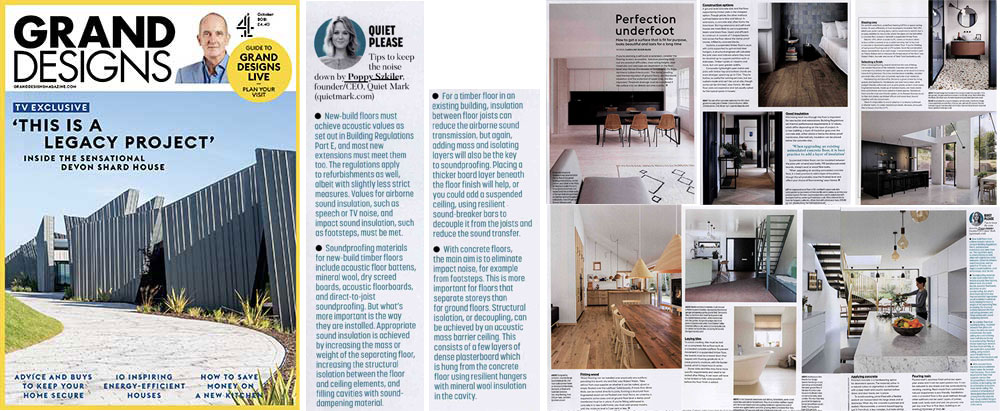
Read the original article in the October 2021 issue of Grand Designs Magazine here.
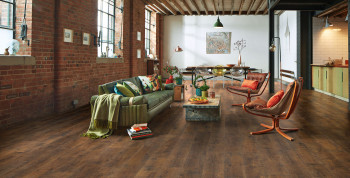
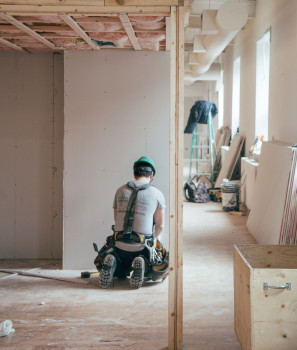
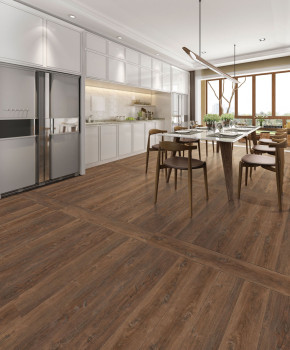
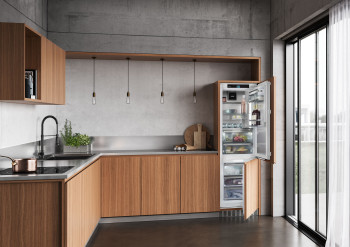







 Quiet Mark Founder
Quiet Mark Founder